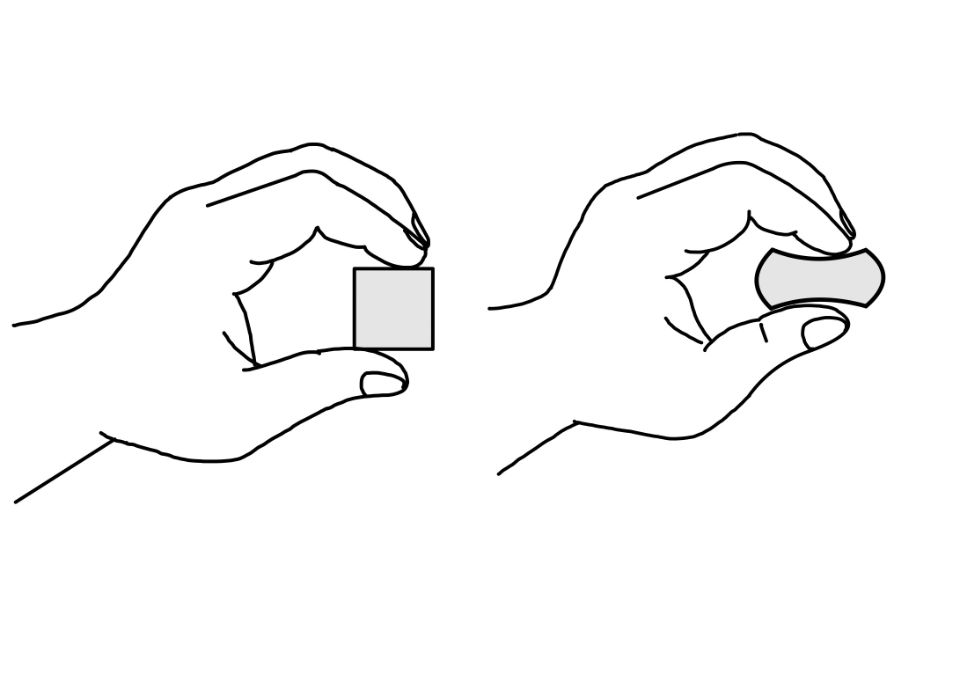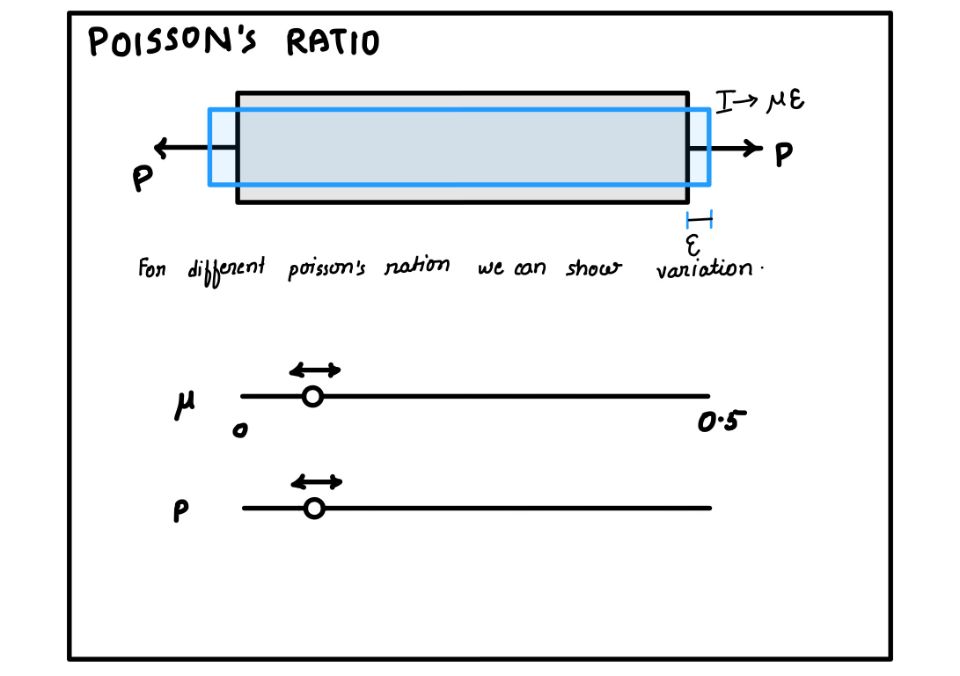Poisson’s ratio is a crucial concept for engineers. It helps us understand how materials respond to forces. Think of pressing on something – does it just squish down, or does it spread out too? This ratio guides us in choosing materials for buildings, bridges, and machines that can handle different kinds of stress. It’s like a secret code for making sure things stay safe and reliable in the real world.

Definition: Poisson’s Ratio is a measure of how much a material tends to shrink in one direction when it is stretched or expanded in another.
$$\nu =-\frac{\text{Lateral strain}}{\text{Longitudinal strain}}$$
Poisson’s Ratio in Action
To understand Poisson’s Ratio in action, consider a prismatic two-dimensional body. When you pull it lengthwise, the body gets thinner from the sides.
You can interact with the Poisson’s ratio given in the widgets below:
- Zero $\nu$: Slide the $\nu$ bar and make it zero. Now, to increase the load in the body, you will find the length of the body is increasing but there is no change in the thickness direction.
- Intermediate $\nu$ value: After this keep the $\nu$ bar in the mid, which means assigning some values. Now increase the value of load, you will notice this time change in the thickness direction along with the longitudinal direction. This is due to the Poisson’s ratio.
- Maximum $\nu$: If you make the Poisson’s ratio maximum, which means 0.5, you can notice more lateral strain in the body.

Conclusion
In this article we have learned the following points:
- Poisson’s Ratio Matters: Poisson’s ratio is a critical concept in engineering, which indicates how materials react to forces.
- Guiding Material Choices: It acts as a blueprint for selecting materials in building construction, bridge design, and machine making.
- Real-world Impact: The interactive tool shows how Poisson’s ratio influences material behavior, with practical understanding.
- Engineering Cornerstone: Understanding Poisson’s ratio is basic, control material selection and structural analysis in engineering projects.
- Ensuring Safety and Durability: It ensures creations not only perform but also remain safe and dependable in real-world applications.

Android Apps
⭐️ ⭐️ ⭐️ ⭐️ ⭐️ 1000+ | 400,000 + Downloads (Cumulative)
At eigenplus, our goal is to teach civil engineering students about structural analysis and design starting from the fundamental principles. We do this with the help of interactive android applications and accompanying web articles and videos.
Our apps have helped more than 400 thousand students across the world to understand and learn the concepts of structural engineering. Check out our apps on the google play store.
This article was crafted by a group of experts at eigenplus to ensure it adheres to our strict quality standards. The individuals who contributed to this article are:
Author


